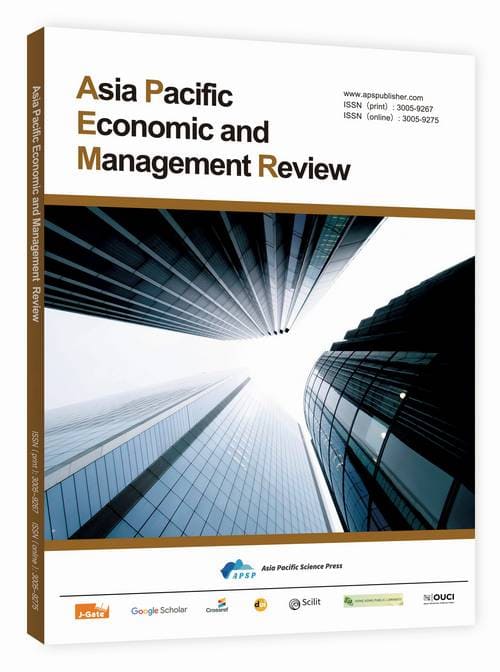Analysis of China's Local Government Debt Risk Causes and Resolution Pathways
DOI:
https://doi.org/10.62177/apemr.v2i5.763Keywords:
Local Government Debt, Risk ResolutionAbstract
In recent years, local government debt risk has emerged as a significant constraint on China's high-quality economic and social development. The continuously expanding scale of local debt, its complex structure, and notable regional disparities present substantial challenges, with county-level government debt risks being particularly prominent. Multiple factors—including real estate market adjustments, weakening land finance revenues, and tightening financing policies—have contributed to frequent debt defaults and credit risk events in certain regions, significantly intensifying debt sustainability pressures. To advance risk mitigation, authorities have implemented "three-debt integrated management," exploring the unified administration of explicit government debt, implicit debt, and local government financing vehicle (LGFV) debt. Various measures have been employed to optimize debt structure and effectively contain new debt while resolving existing liabilities, including refinancing bond replacements, platform company restructuring, asset revitalization, and financial alliances. This paper analyzes the root causes of local government debt risks, systematically examines current challenges and governance effectiveness, and proposes targeted policy recommendations. These include further strengthening long-term risk prevention mechanisms, enhancing budget constraints and information disclosure, focusing on industrial upgrading and fiscal system reform, and promoting sustainable and refined local debt management. This research provides both practical reference and theoretical guidance for local government debt risk resolution.
Downloads
References
Jia, J., Guo, Q., & Zhang, J. (2014). Fiscal Decentralization and Local Expenditure Policy in China. China Economic Review, 28, 107-122. https://doi.org/10.1016/j.chieco.2014.01.002
Zhang, S., Li, Y., Xu, C., & Xiong, Z. (2024). Does Fiscal Decentralization Reduce Environmental Degradation Through Mitigating Resource Mismatch and Digital Transformation? Evidence from China's Resource-based Cities. Resources Policy, 95, 105155. https://doi.org/10.1016/j.resourpol.2024.105155
Zhan, C., de Jong, M., & de Bruijn, H. (2017). Path dependence in financing urban infrastructure development in China: 1949–2016. Journal of Urban Technology, 24(4), 73-93. https://doi.org/10.1080/10630732.2017.1334862
Liu, Z., Jiang, C., Huang, J., Zhang, W., & Li, X. (2023). Fiscal Incentive, Political Incentive, and Strategic Interaction of Illegal Land Use by Local Governments. Land Use Policy, 129, 106647. https://doi.org/10.1016/j.landusepol.2023.106647
Corsetti, G., Meier, A., & Müller, G. J. (2012). What Determines Government Spending Multipliers?. Economic Policy, 27(72), 521-565. https://doi.org/10.1111/j.1468-0327.2012.00295.x
Wang, Y., & Hui, E. C. M. (2017). Are Local Governments Maximizing Land Revenue? Evidence from China. China Economic Review, 43, 196-215. https://doi.org/10.1016/j.chieco.2017.02.005
Lu, Y., & Sun, T. (2013). Local Government Financing Platforms in China: A fortune or misfortune?. International Monetary Fund.
Pan, F., Zhang, F., Zhu, S., & Wójcik, D. (2017). Develop by Borrowing? Inter-jurisdictional Competition, Land Finance and Local Debt Accumulation in China. Urban Studies, 54(4), 897-916. https://doi.org/10.1177/0042098015624838
Li, T., & Du, T. (2021). Vertical Fiscal Imbalance, Transfer Payments, and Fiscal Sustainability of Local Governments in China. International Review of Economics & Finance, 74, 392-404. https://doi.org/10.1016/j.iref.2021.03.019
Ong, L. H. (2012). Fiscal Federalism and Soft Budget Constraints: The Case of China. International Political Science Review, 33(4), 455-474. https://doi.org/10.1177/0192512111414447
Kashyap, A. K., & Stein, J. C. (2023). Monetary Policy When the Central Bank Shapes Financial-market Sentiment. Journal of Economic Perspectives, 37(1), 53-75. https://doi.org/10.1257/jep.37.1.53
Downloads
How to Cite
Issue
Section
License
Copyright (c) 2025 Jingjing Cui, Dongping Xiao

This work is licensed under a Creative Commons Attribution-NonCommercial 4.0 International License.

















